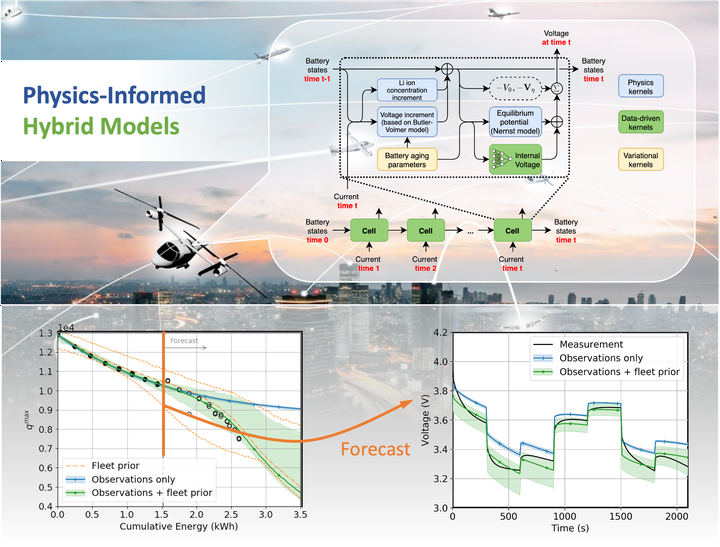Hybrid physics-informed neural networks for lithium-ion battery modeling and prognosis

Abstract
Lithium-ion batteries are commonly used to power unmanned aircraft vehicles (UAVs). The ability to model and forecast remaining useful life of these batteries enables UAV reliability assurance. Building principled accurate models is challenging due to the complex electrochemistry that governs battery operation. Alternatively, reduced order models have the advantage of capturing the overall behavior of battery discharge, although they suffer from simplifications and residual discrepancy. This paper presents a hybrid modeling approach that directly implements physics within deep neural networks. While most of the input–output relationship is captured by reduced-order models, data-driven kernels reduce the gap between predictions and observations. A reduced-order model based on Nernst and Butler–Volmer equations represents the overall battery discharge, and a multilayer perceptron models the battery non-ideal voltage. Battery aging is characterized by time-dependent internal resistance and the amount of available Li-ions, which are modeled through an ensemble of variational Bayesian multilayer perceptrons. The approach is validated using data publicly available through the NASA Prognostics Center of Excellence website. Results showed that our hybrid battery prognosis model can be successfully calibrated, even with a limited number of observations. Moreover, the model can help optimizing battery operation by offering long-term forecast of battery capacity.